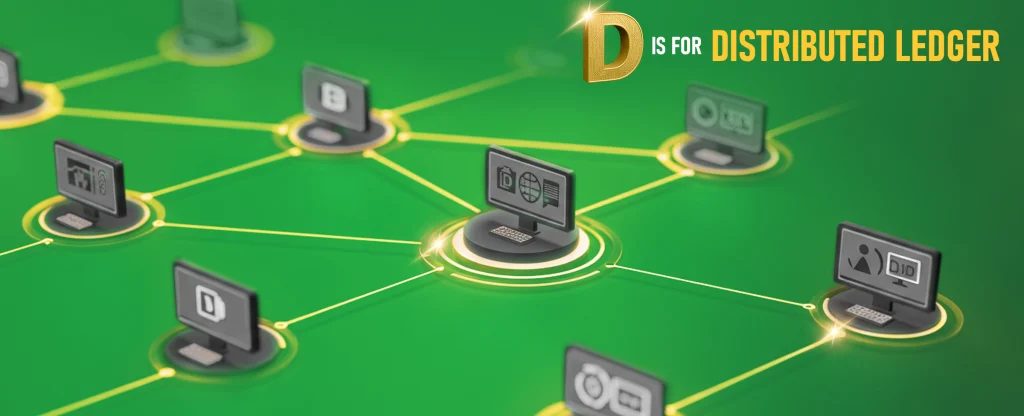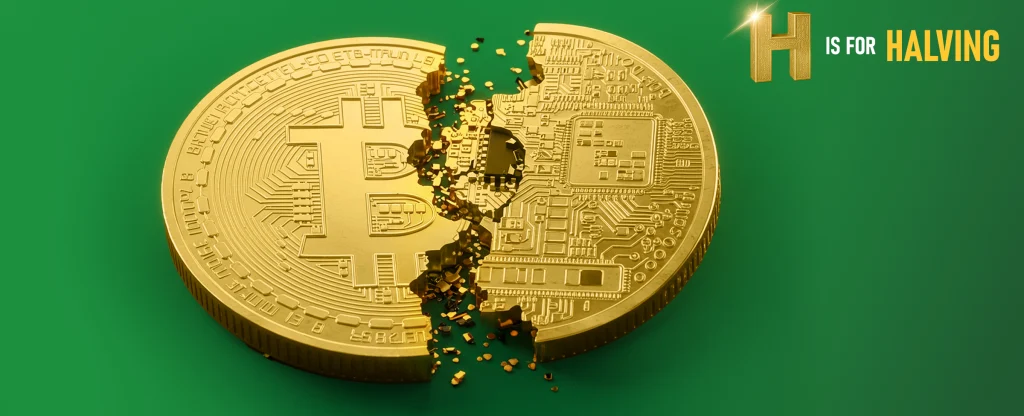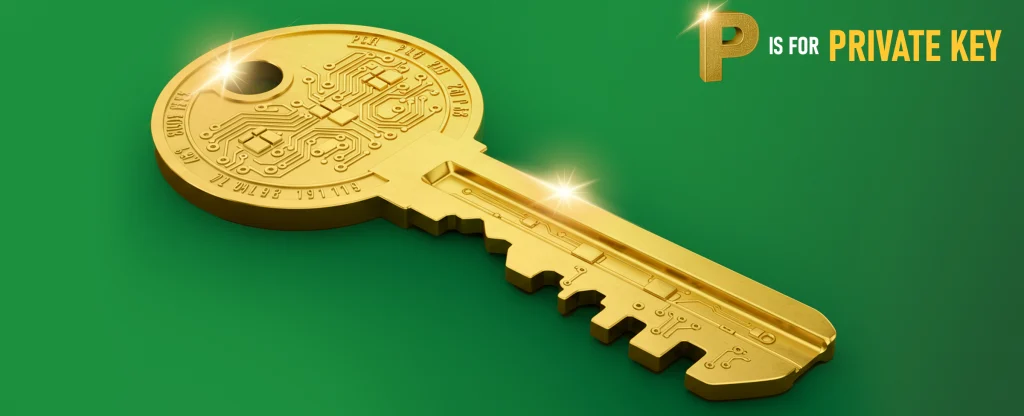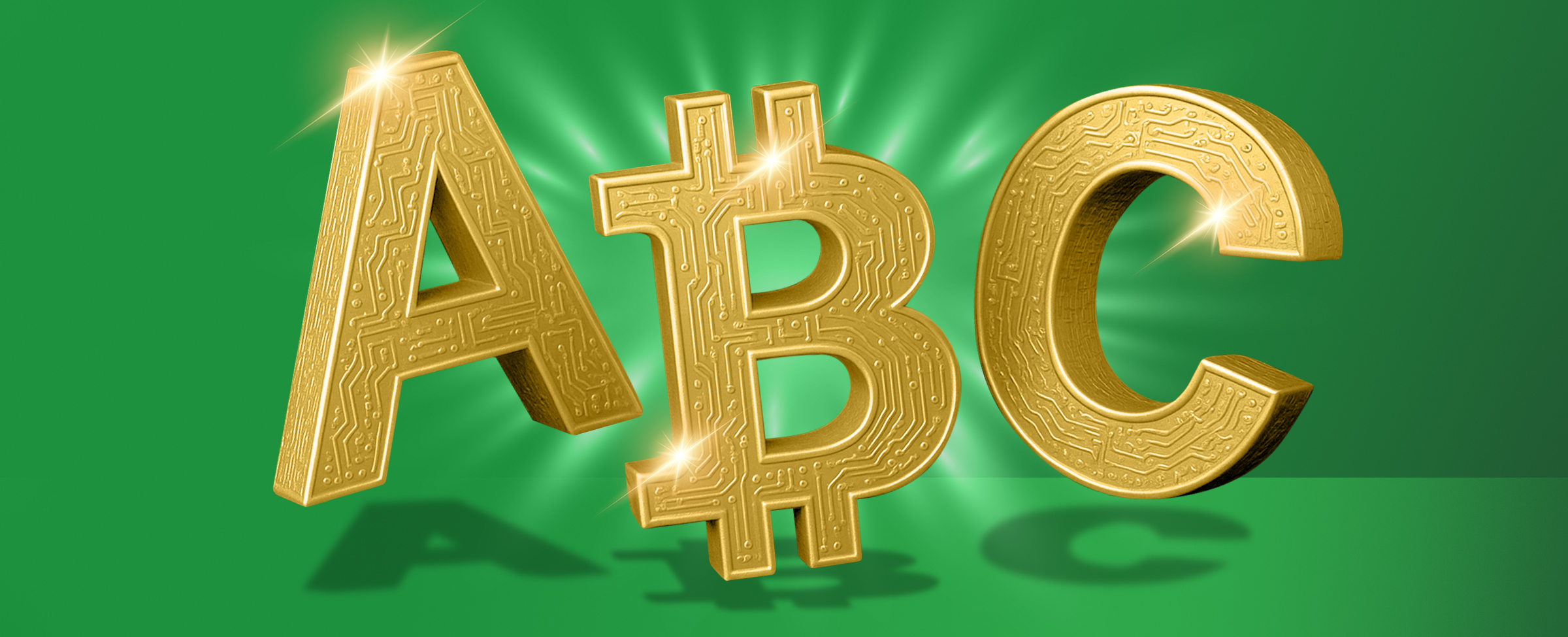If you’re just starting out in crypto or have got some idea on what it’s all about, then consider this part two of your apprenticeship! The lingo can feel like a whole new language but don’t worry, the team here at Joe Fortune have got you covered. This A-Z guide breaks down the most common crypto terms in plain English, so hopefully you can get comfy with the basics and feel more confident when you’re in the crypto space.
A B C D E F G H I K L M N P S T U V W
A
Altcoins
In simple terms this is any crypto that isn’t Bitcoin.
All Time High / Low (ATH/ATL)
This is the highest or lowest price a coin has ever reached.
B
Bear Market
When prices are falling and people get a little bit nervous.
Bull Market
This is when prices are rising, and investors are excited and optimistic.
Bitcoin
The number one cryptocurrency, there will be a maximum of 21 million and production is expected to finish in about 2140.
Bitcoin Maximalist
Someone who worships at only the Bitcoin altar and nothing else matters.
Block
A group of transactions verified and added to a blockchain.
Blockchain
A secure, public ledger that stores all crypto transactions.
Block Explorer
This is a tool to view transactions on a blockchain.
Block Reward
Crypto which owners, users or miners earn for verifying a block.
C
Cold Wallet
Cold Wallet is a type of wallet that’s not connected to the internet. It’s a secure way to store your crypto because it’s less vulnerable to online hacks. Think of it like keeping your cash in a safe that no one can access online. The only downside is you need to remember where you keep it, as losing it means losing access to your crypto.
Consensus
Consensus is the process by which blockchain users or participants agree on what transactions are valid and should be added to the blockchain. It ensures that everyone on the network is on the same page, so no one can cheat or change the transaction history. Different blockchains use different methods of reaching consensus, like Proof-of-Work or Proof-of-Stake.
Cryptography
Cryptography is the technology that secures and protects crypto transactions. It uses advanced algorithms to ensure that only the right people can access their coins and that transactions are tamper-proof. This technology is what keeps crypto safe from hackers and fraud.
Custodial Wallet
Custodial Wallet is a type of wallet where a third party, like an exchange (e.g. Coinbase or Binance), controls and manages your keys. This means the exchange is responsible for keeping your crypto safe, but it also means they have access to it. While custodial wallets are easier to use, they come with the risk that if the exchange gets hacked or goes under, you could lose your funds.
D
dApp
This is a decentralised application built on a blockchain.
DAO
Stands for Decentralised Autonomous Organisation. A company run by code and votes.
DeFi
Decentralised finance. Financial services without banks and middlemen/women who at times make things more complicated than needs be!
Distributed Ledger
A shared digital record across multiple sites, countries, or institutions.

DYOR
This stands for Do Your Own Research. Hopefully this A-Z and our other Crypto guides assist all you readers whilst you are researching.
E
ERC-20
Ethereum standard for tokens like UNI or LINK.
ERC-72
Ethereum standard for NFTs.
Equity Token
A token that represents company ownership.
EVM (Ethereum Virtual Machine)
This system is very important as it runs Ethereum smart contracts.
F
Fiat
Fiat is what is used to describe traditional currency like AUD or USD.
Fork
A Fork is when a blockchain splits into two.
FOMO
Stands for Fear of Missing Out. Often leads to poor decisions.
FUD
Fear, Uncertainty, Doubt. Often used to spread panic and a bear market along with plenty of volatility.
Fundamental Analysis
Doing your homework properly by judging a coin based on its tech, the team behind it, and what you would be able to use it for.
G
Gas
Gas is the fee you pay when you make a transaction on the Ethereum network. It’s needed to pay miners or validators to process and confirm your transaction. The more complex the transaction (like interacting with a smart contract), the higher the gas fee. Gas fees can fluctuate depending on how busy the network is, which means they can sometimes be quite high during peak times.
Gwei
Gwei is a very small unit of Ethereum (ETH) that is used to measure and calculate gas fees. One Gwei is one-billionth of an ETH, and it’s the standard way to talk about gas fees on Ethereum. For example, when you’re paying a gas fee, you might see it quoted in Gwei instead of ETH, as the fee is usually a fraction of a single ETH.
H
Halving
Halving happens about every four years and is when Bitcoin’s mining reward is cut in half. In effect there is a maximum number of Bitcoin which will be available. Mining will cease in about the year 2140.

Hash Rate
How much computing power is securing a network.
HODL
Hold On for Dear Life. An intentional misspelling of “hold”, this is a term occasionally used for keeping crypto long term when the markets are getting volatile.
Hot Wallet
This is your online wallet, which is easier to use than a cold wallet, but is less secure.
I
ICO
ICO, or Initial Coin Offering, is a way for new crypto projects to raise money from the public. It works like crowdfunding — people can buy tokens before the project launches, usually at a lower price. The idea is that if the project takes off, those early tokens could go up in value. ICOs became very popular a few years back, but they also carry risk, as not every project ends up being legit or successful.
Index
A crypto index is a group of coins that are tracked together, kind of like a stock index on the share market. Instead of buying individual coins, some investors choose to follow or invest in an index that represents a wider chunk of the market. It’s a way to spread risk and get a feel for how the overall crypto market is moving.
K
KYC
Know Your Customer. This is something that everyone who looks to buy cryptos will need to go through at some stage. It isn’t too much of a long process, but you need to provide some ID which will need to be checked and verified by all proper exchanges.
L
Ledger
This is a record of transactions. In its own way a Blockchain is a type of ledger.
Liquidity
The more liquidity there is, the easier it is to trade a coin without the price changing.
Limit Order
Here is how you make an order to buy or sell a coin at a price which you set or predetermine.
M
Margin Trading
High stakes stuff; this is trading with borrowed money. Dead set it is risky and not advisable for beginners.
Market Cap
This is the total value of a coin, i.e. the price multiplied by the number of coins.
Mining
This process uses up a lot of electricity, it is done by using computers to verify blockchain transactions.
Mining Pool
Mining Pool is a group of miners sharing rewards after pooling their resources together and collecting a successful haul of coins.
N
NFT
A Non-Fungible Token. Is a unique digital item, like art or music, that shows who owns it. Each one is different and tracked on a blockchain, so it can’t be copied or swapped one-for-one like Bitcoin. People buy and sell them online.
Network Fees
Network Fees are small charges you pay when sending crypto or using apps on a blockchain. The fee goes to people who confirm and secure the transaction. Fees change depending on how busy the network is.
Node
Node is a computer that helps run a blockchain. It stores the full history of transactions and checks that everything is correct. Lots of nodes make the system more secure and harder to hack.
Nonce
Nonce, “short for number used only once”, is a random number used by miners to help create new blocks. They try different numbers until one works. This helps keep the blockchain secure and adds new coins into the system.
P
Paper Wallet
A printed version of your wallet’s keys. It’s a secure way to store your crypto offline.
Private Key
A Private Key is a secret code that lets you access your crypto. Keep it safe and never share it.

Proof-of-Stake
This secures the network by having people lock up coins. The more coins you stake, the more you can earn and help secure the system.
Proof-of-Work
Proof-of-Work uses computing power to secure the network. Miners solve puzzles to add new blocks and get rewards.
Public Key
Public Key is your wallet address. You give it to others so they can send you crypto.
Pump and Dump
Pump and Dump sounds a bit exciting… This is when people hype up a coin to increase its price, then sell it quickly for profit once the price spikes.
S
Sats or Satoshis
The smallest unit of Bitcoin (100 million of them = 1 BTC). Which given the price of Bitcoin isn’t too bad!
Security Token
A token that represents real-world assets or company shares.
SegWit
This was a Bitcoin upgrade to improve transactions. The Segregated Witness change was to prevent unintentional Bitcoin transaction malleability, i.e. altering the transaction ID before it’s confirmed in a block.
SHA-256
Security tech used in Bitcoin mining.
Smart Contracts
Code that runs on blockchains to automate transactions.
Solidity
Programming language used by techies on Ethereum.
Stablecoin
This is a cryptocurrency which is tied to a stable value such as a major world currency like the USD or AUD.
T
Technical Analysis (TA)
Technical analysis, or TA, is when you study price charts and patterns to try and predict where the price of a coin might go next. People look at things like trends, volume, and past movements to help decide when to buy or sell. It’s common in both crypto and stock markets, though it’s not always accurate — the market can still surprise you.
Testnet
Testnet is a practice version of a blockchain where developers can try out new features, apps, or updates without risking real money. It works just like the main blockchain but uses test coins with no actual value. It’s a safe way to experiment before launching on the real network.
Token
A Token is a type of cryptocurrency that is built on top of an existing blockchain like Ethereum. Unlike coins such as Bitcoin, which have their own blockchain, tokens rely on another network to function. Tokens can be used for lots of things — access to apps, governance, rewards, or even as digital art (like NFTs).
Transaction Fee
A Transaction Fee is the small amount of crypto you pay when sending coins, swapping tokens, or using blockchain apps. It goes to the network to pay for processing and helps keep things running smoothly. Fees vary depending on the network and how busy it is.
U
UTXO
No, this isn’t a robot from Star Wars, UTXO stands for Unspent Transaction Output. In summary this is how Bitcoin tracks what coins you still own.
Utility Token
A token used to access features of a blockchain or dApp.
V
Validators
These are people who stake crypto to verify transactions in PoS systems.
Volatility
How much a coin’s price changes up or down. If something is said to be very volatile it means that in a very short period, the price is going up and down with massive fluctuations.
W
Wallet
A tool you use to store, send, and receive cryptocurrency. It keeps track of your crypto balances and holds your private keys, which give you access to your funds. Wallets can be online (hot wallets) or offline (cold wallets), depending on how you want to balance convenience and security.
Whale
A ‘Whale’ is someone who holds a massive amount of a particular cryptocurrency. Because they own so much, their buying or selling can really move the market. When a whale makes a big trade, it can cause prices to spike or drop, so traders often watch what they’re doing.
White Paper
White Paper is a detailed document that outlines what a crypto project is all about. It explains the idea, the tech behind it, how the token works, and what the team plans to build. Reading a project’s white paper is a good way to learn whether it seems legit or not before investing.
How Can a Beginner Learn Crypto?
Getting into crypto can feel a bit full-on at first, but it’s easier than it looks. Start by reading Joe Fortune’s Crypto for Dummies guide which provides you with the basics but without too much of the tech talk. YouTube’s great too, just make sure you stick with trusted creators.
You can also jump into forums like Reddit or Aussie Crypto Discords to hear from real people. Once you’re feeling confident, try a small trade even twenty bucks is enough to get a feel for it. Always remember, never invest more than you’re willing to lose, and DYOR… do your own research. With time and care, you’ll pick it up no worries.
